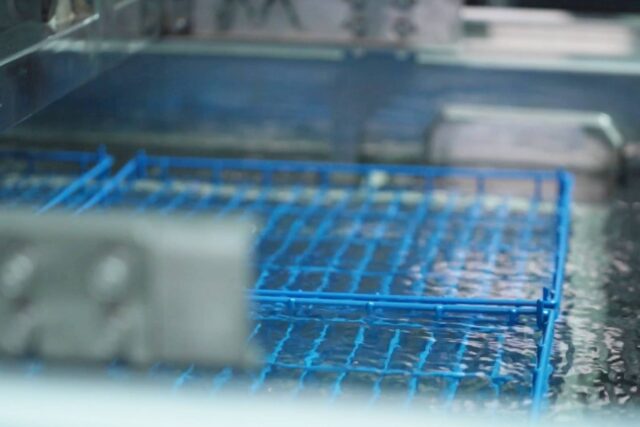Debunking Common Myths about Ultrasonic Cleaning
In the domain of cleaning innovation, ultrasonic cleaning stands out as a strong and effective strategy. With its developing prominence, a few myths and misguided judgments have arisen, obfuscating the comprehension of its capacities. Let’s dispel some common myths about ultrasonic cleaning.

Myth 1: Ultrasonic Cleaning is Only for Delicate Items
One prevailing myth about ultrasonic cleaning is that it’s solely for delicate or fragile items. While it is true that ultrasonic cleaning is gentle on delicate materials like jewelry, it is also incredibly effective for heavy-duty cleaning tasks. From automotive parts caked in grease to industrial equipment coated in stubborn grime, ultrasonic cleaners can tackle a wide range of surfaces.
The technology gives users the flexibility of choosing the ultrasonic frequency, power, and the cleaning agent to perfectly suit the cleaning application, be it delicate or heavy-duty applications. This makes ultrasonic cleaning ideal for a diverse array of items, from fine jewelry to sturdy machine parts.
Myth 2: Ultrasonic Cleaning Is Harmful to Electronics
Another misconception is that ultrasonic cleaning poses a risk to electronic devices. While it’s true that water and electronics generally don’t mix well, modern ultrasonic cleaners are designed with this in mind. Specialized cleaning solutions like IPA, are used that are safe for electronics, ensuring that components remain undamaged during the cleaning process.
For delicate electronic parts such as circuit boards, ultrasonic cleaning offers a non-invasive, thorough cleaning method. It removes dust, dirt, and other contaminants that can hinder performance without risking damage to the components themselves. Proper drying methods are employed afterward to ensure that no moisture remains, further safeguarding the electronics.
Myth 3: Ultrasonic Cleaning Requires Extensive Training
Some believe that operating an ultrasonic cleaner requires specialized training or expertise. While understanding the basics of ultrasonic cleaning is essential for optimal results, modern machines are designed to be user-friendly. Most units come with straightforward controls, making them accessible to operators with minimal training.
Moreover, manufacturers often provide detailed manuals and guidelines for proper usage. These resources cover everything from setting the right temperature and frequency to choosing the appropriate cleaning solution for specific materials. With a bit of familiarization, anyone can effectively use an ultrasonic cleaner to achieve outstanding results.
Myth 4: Ultrasonic Cleaning Is Only for Large-Scale Operations
Contrary to popular belief, ultrasonic cleaning is not limited to large-scale industrial operations. While automation and advanced monitoring systems used in the ultrasonic cleaning machines help to clean large continuous batches efficiently, there are plenty of compact and affordable options available for smaller-scale applications.
Home users, hobbyists, and small businesses can benefit greatly from the convenience and effectiveness of ultrasonic cleaning. From cleaning jewelry and watches at home to restoring vintage collectibles, these compact units offer professional-grade cleaning in a manageable size.

Myth 5: Ultrasonic Cleaning Is Expensive and High-Maintenance
One of the persistent myths surrounding ultrasonic cleaning is that it’s prohibitively expensive and requires constant maintenance. While ultrasonic cleaners do involve an initial investment, the long-term benefits often outweigh the costs.
Modern units are designed for durability and ease of maintenance. Routine cleaning of the tank and regular checks on the machine’s components can keep it running smoothly for years. Additionally, the savings in time and labor costs from efficient cleaning make it a cost-effective solution for many businesses.
Myth 6: Ultrasonic Cleaning Is Not Environmentally Friendly
Some skeptics argue that ultrasonic cleaning is not environmentally friendly due to the chemicals used in the cleaning process. While it’s true that cleaning solutions are necessary to enhance the cleaning action, there are eco-friendly options available.
Biodegradable and non-toxic cleaning solutions are becoming increasingly popular in ultrasonic cleaning applications. These solutions offer effective cleaning power while minimizing environmental impact. Additionally, the efficiency of ultrasonic cleaning reduces the need for excessive water usage, further contributing to its eco-friendliness.
Myth 7: Ultrasonic Cleaning Is Not Effective on Certain Materials
A common myth is that ultrasonic cleaning is ineffective on certain materials or types of dirt. The truth is, that ultrasonic cleaners are highly versatile and can clean a wide range of materials effectively.
From metals like stainless steel and aluminium to plastics and ceramics, ultrasonic cleaning can remove dirt, grease, oil, and even rust. The key is selecting the appropriate cleaning solution and adjusting the ultrasonic parameters like frequency, temperature & power settings to suit the material and type of contamination.
Myth 8: Aluminium Can’t Be Cleaned in an Ultrasonic Cleaner
This is a widely held misconception, but ultrasonic cleaners are perfectly capable of cleaning aluminium. The key lies in using the proper settings and cleaning solution. Aluminium is a softer metal, and harsh chemicals or abrasive cleaning methods can damage its surface. However, with the right combination of a gentle cleaning solution and appropriate power settings, ultrasonic cleaners can safely and effectively remove dirt, grime, and contaminants from aluminium objects like jewelry, engine parts, or delicate instruments.
Myth 9: Longer Cleaning Cycles Yield Better Results
Ultrasonic cleaning is known for its efficiency, often completing cleaning cycles in under 10 minutes. This is significantly faster than manual cleaning or alternative methods like spray washers. While some contaminants may require slightly longer cleaning times, the sweet spot typically lies between 3-5 minutes. Running the cleaner for excessive periods won’t necessarily improve results and may even be counterproductive by causing unnecessary wear and tear on the cleaning solution or the object itself. Following the manufacturer’s recommendations for cleaning time based on the object and contaminant is key.
In conclusion, ultrasonic cleaning is a versatile, efficient, and effective method for cleaning a variety of items across different industries. By debunking these myths and misconceptions, we can better appreciate the value that ultrasonic cleaning brings to businesses, hobbyists, and everyday cleaning tasks. Whether it’s restoring vintage treasures or maintaining industrial equipment, ultrasonic cleaning stands as a reliable and innovative solution.
Feel free to connect with our team to debunk the myths about ultrasonic cleaning


